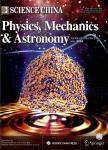Simulating liquid-vapor phase separation under shear with lattice Boltzmann method
Simulating liquid-vapor phase separation under shear with lattice Boltzmann method作者机构:China University of Mining and TechnologyBeijing 100083China National Key Laboratory of Computational PhysicsInstitute of Applied Physics and Computational MathematicsBeijing 100088China
出 版 物:《Science China(Physics,Mechanics & Astronomy)》 (中国科学:物理学、力学、天文学(英文版))
年 卷 期:2009年第52卷第9期
页 面:1337-1344页
核心收录:
学科分类:080704[工学-流体机械及工程] 08[工学] 0807[工学-动力工程及工程热物理] 0805[工学-材料科学与工程(可授工学、理学学位)] 0704[理学-天文学]
基 金:Supported by the National Natural Science Foundation of China (Grant Nos. 10775018 and 10702010) the National Basic Research Program of China (Grant No. 2007CB815105) the Science Foundations of LCP and CAEP
主 题:lattice Boltzmann method the shan-chen model K-H instability phase separation
摘 要:We study liquid-vapor phase separation under shear via the Shan-Chen lattice Boltzmann model. Besides the rheological characteristics, we analyze the Kelvin-Helmholtz (K-H) instability resulting from the tangential velocity difference of the fluids on two sides of the interface. We discuss also the growth behavior of droplets. The domains being close to the walls are lamellar-ordered, where the hydrodynamic effects dominate. The patterns in the bulk of the system are nearly isotropic, where the domain growth results mainly from the diffusion mechanism. Both the interfacial tension and the K-H instability make the liquid-bands near the walls tend to rupture. When the shear rate increases, the inequivalence of evaporation in the upstream and coagulation in the downstream of the flow as well as the role of surface tension make the droplets elongate obliquely. Stronger convection makes easier the transferring of material particles so that droplets become larger.



